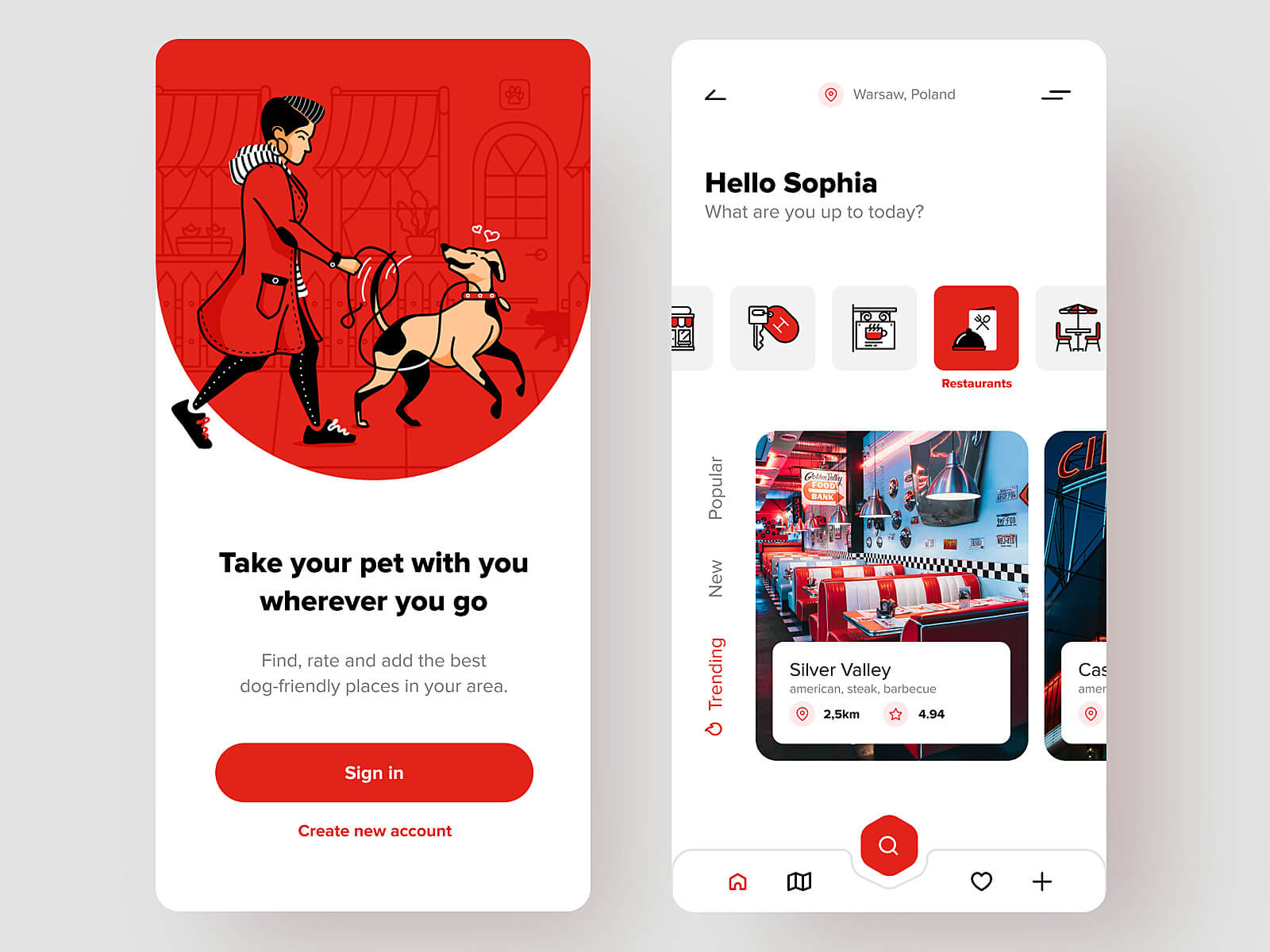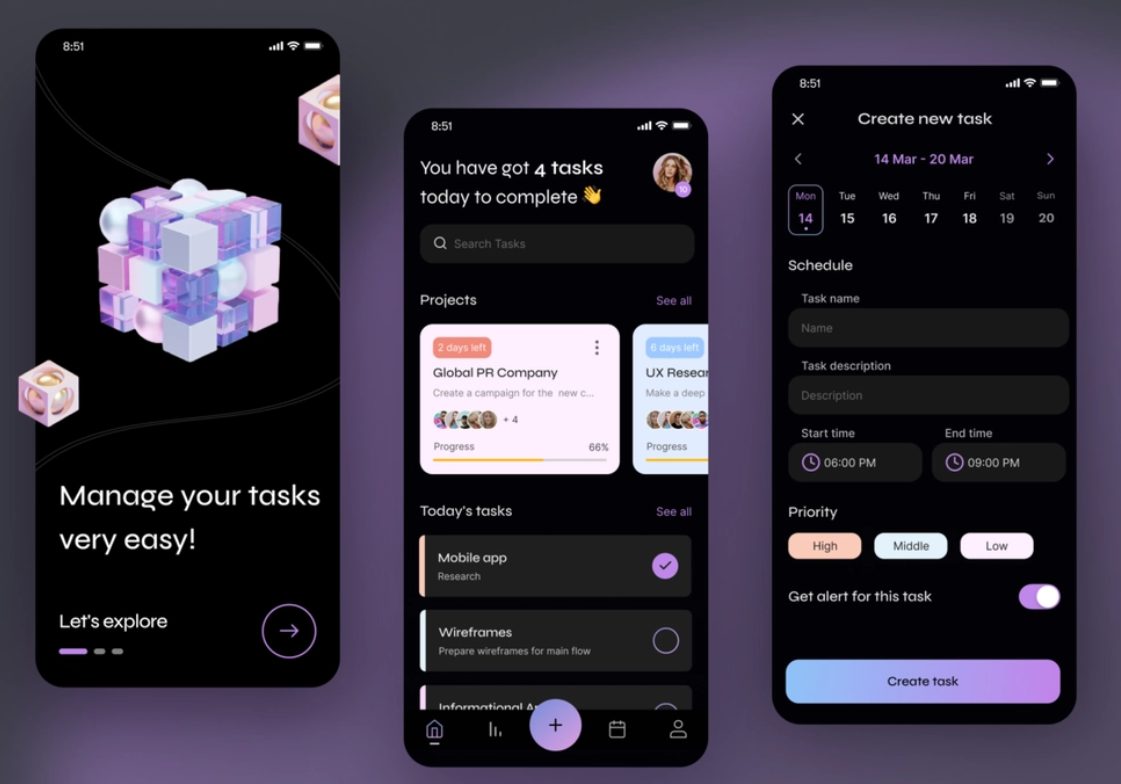To design products considering only your abilities as a baseline means excluding the needs of much range of humanity. Let’s not limit the beautiful meaning of diversity but emphasize it by creating an inclusive design. A better design open for all.
Human is initially imperfect. However, is imperfection something bad? Imperfection means a diversity of forms, meanings, experiences, and perspectives. The human body is imperfect because of a variety of individual peculiarities. The human mind is imperfect because we all have diverse views, thoughts, and life experiences. If it all were perfect, we’d probably lived in a society of clones and boring copies.
With a very blurry understanding of what is “normal,” we usually design things that fall into this category. Most often, we miss the needs of those who are different, those who don’t match our concept of “normal.” Here is when inclusive design deploys its power and meaning. In this article, I’ll talk about the importance of inclusivity in UX design and key inclusive design principles.
Social Diversity as Inspiration for Better Design

Social diversity, equity and inclusion: these three amazing trends express the pains, needs, and experiences of 7.4 million people worldwide. That’s how many of us live in different cities, countries, and continents globally. Black lives matter, Asian lives matter, White lives matter… Everyone matters and has a special mission here. After all these social diversity discussions happening in the online and offline world today, we likely start realizing that. But do we keep it in mind every day, especially when designing new products? I’m not sure.
The designer’s top mission is to create user-friendly things. “User-friendly” means friendly to the user or easy to use. There are many timeless UX design practices that can help you implement it.
Have you, as a designer, ever thought about how it feels to have a disability? We always say that it’s crucial to “step into the user’s shoes” when designing products to meet their needs. That’s a good moment to try navigating your newly-designed app with only one hand. I’m joking, of course. Or not.
We should learn to create a product that offers comparable experiences and different ways of using it. The inclusive design doesn’t mean one design for all, but a set of different experiences that match different people’s needs.
What Is Inclusive Design?

How I understand inclusive design:
Inclusive design is a product design that physically, cognitively and emotionally satisfies all minorities and majorities within your target audience. It’s an approach to designing mainstream products that are accessible for as many people worldwide as possible.
What Microsoft says about inclusive design:
“Inclusive Design is a methodology, born out of digital environments, that enables and draws on the full range of human diversity. Most importantly, this means including and learning from people with a range of perspectives.” (BTW, this is a cool source of inspiration from Microsoft)
What Inclusive Design Research Centre at OCAD University says:
“Inclusive Design considers the full range of human diversity with respect to ability, language, culture, gender, age, and other forms of human difference.”
What Apple says:
“Inclusive design gives more people the opportunity to enjoy your app by ensuring that everyone can use and understand it. These three best practices can help you create an inclusive app: 1) design with accessibility in mind; 2) support personalization; 3) audit and test your app for accessibility.”
Who Do We Usually Design Products For?

“Let’s step into the user’s shoes!” – this approach doesn’t work if we just try operating like the user. By considering our own abilities as a baseline for UX design, we will create products that improve lives, work well with a body, and solve user problems. But they will do so for people that are similar to us (of the same age, gender, body abilities, social media preferences, or even an income).
Referring to not only the design industry, people usually create things that target the same people as they are. They can win a segment, but it’s impossible to win the love of millions of users with such an approach. Why? Just because we exclude the needs, peculiarities, and preferences of these “millions.”
Who Do We Unintentionally Exclude?
We may unintentionally exclude everyone different from us. You aren’t, maybe, a small boy who has never used similar apps before, an elderly woman with vision problems, or a person with an impairment. Our interactions with the surrounding world and technology, in particular, are based on our abilities to see, hear, touch, and understand. All people do it in their own ways. When it comes to humans, there is no place for concepts, such as “normal” or “perfect.” How imperfect we are defines our uniqueness. It creates social diversity. Globally.
Let’s not limit the beautiful and powerful meaning of diversity, but emphasize it by designing products with care for those near us.
The designer’s challenge and honorable mission is to create a product accessible to as many people as possible and emphasize their abilities, not limitations. Empower everyone. Don’t make exceptions.
3 Principles of Inclusive UX Design

The way how Microsoft design team defines inclusive design principles much resonates with me. So, I’m sharing them briefly with you too.
I. Recognize exclusion
Exclusion happens when we forget that humanity is diverse and create products upon our own experiences of interaction with the world. So, the first step to inclusive design is to recognize different user groups within your audience. Keep in mind that there might also be people with impairments, activity limitations, and participation restrictions. As designers, you should investigate how to overcome the interactivity gap between these people and their environments.
II. Learn from diversity
Social diversity is a great source of design inspiration and usability insights. Solutions developed for people with disabilities may become new, easier, and more enjoyable experiences for everyone beyond this specific user group. We never know when a situational user disability may happen and how we can manage it until we test a product with those who face it almost every day. It’s the way we can stop adapting to technology and adapt it to us instead.
III. Solve for one, extend to many
Two previous principles help create inclusive and elegant digital solutions for all and everyone. What’s an urgent necessity for one might become an improved product experience for others. By optimizing products for people with physical or cognitive disabilities, we make them better for all users, from a kid to a senior.
The beauty of limitations lies in the opportunity to investigate the problem under the magnifying glass of the so-called “disability” and find the best solution to overcome it. “Disabilities” maximize friction, make the problem visible, and highlight the necessity of optimizing for better UX.
It’s a new approach to creating a truly human-centered design. In a book “Business-Driven Digital Product Design” created collaboratively with Fireart Studio, we define human-centered design as the following:
“At its heart, human-centered design is an approach focused on creative problem-solving based on user behavior. It observes the design process from the end-user perspective and involves considering a problem within context, brainstorming, conceptualizing, creating, and implementing the design solution.”
Don’t Ignore Much of The Range of Humanity

User-oriented design means oriented at every user. Let’s not make exceptions because everyone matters. From the change of mindset to creating new, improved designs – we can start building a more inclusive and sustainable future right now. By helping match someone’s limitations with their surroundings for more comprehensive interactivity, we all evolve too.
Article first published at Bootcamp by Dana Kachan





















